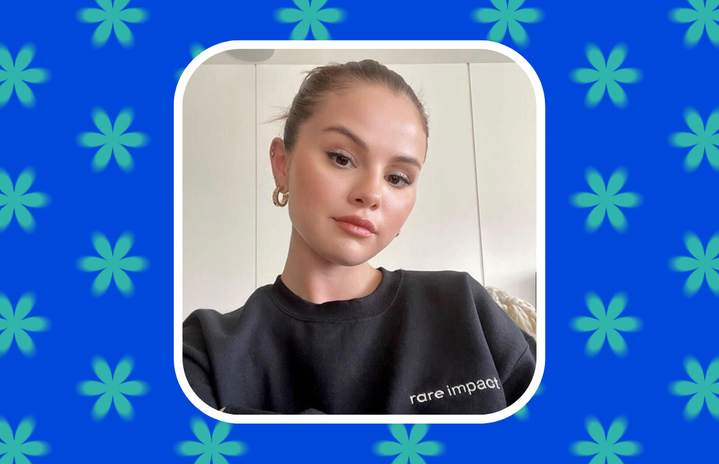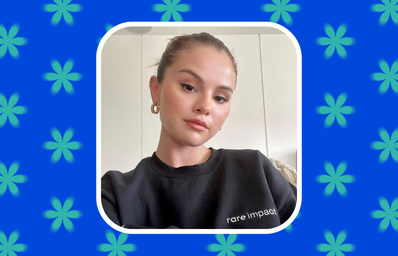“When am I going to be good just by myself? Not needing anybody to be associated with […] Like, it sucks the life out of me, and I don’t want to perform. I have no idea what the f*ck I’m doing,” revealed Selena Gomez in her new documentary during a finale rehearsal for the Revival World Tour in 2016.
Directed by Alek Keshishian, My Mind & Me trails Gomez’s life for the past six years. At the film’s World Premiere at the American Film Institute Festival, Gomez and Keshishian revealed that they initially cooperated to document the Revival Tour but soon discovered Gomez’s latent struggles and experiences that needed to be shared. The director discerned that the Rare Beauty founder is “much, much more than a pop star.” Her alacrity to let Keshishian into her mind encouraged the director to push the boundaries of their initial venture and create the masterpiece that My Mind & Me turned out to be.
The film begins in Gomez’s Revival era, a time Gomez felt she should be enjoying but was conversely doused with confusion and indignation. With her Disney starlet status looming over her shoulder, Gomez opens up about her imposter syndrome during a peak moment of her career. “I don’t want him to think that he signed some f*cking Disney kid,” the singer said, referring to John Janick, the chairman and CEO of Interscope Geffen A&M Records. “I don’t want to disappoint John.”
Gomez often visits her hometown, Grand Prairie, in Texas, to quiet her mind and remember her roots. In the film, she stops by her childhood home and reminisces over the memories that flood each room. Gomez received the life-changing call in the home’s bathroom that she had booked the PBS show Barney & Friends. Since then, Gomez revealed, she has “never stopped working.”
Although she loves singing, acting, and producing, Gomez shared that she often feels “like a product” and that her truest passion is philanthropy. Gomez has launched The Rare Impact Fund as part of her beauty brand Rare Beauty and has raised over 100M dollars to support access to mental health services in educational settings.
Staying true to her ardent need to give back to others, Gomez visits Kenya with the WE Charity organization. The film shows how Gomez connects with young ladies in Kenya whose thirst for knowledge has guided them through the tragedies in their home lives. Inspired by the girls’ fearlessness and resilience, Gomez shared that her next goal is to work with the White House to pass a bill that requires mental health courses to be included in school curricula. When Craig Kielburger, the founder of WE, asked Gomez what was holding her back, the singer poignantly responded: “that I’m not able to. I’m not capable, you know. I’m not good enough. I don’t know. That’s something that I’ve felt a lot growing up.”
Nobody gets through life doubt-free. From questioning every detail of the Revival World Tour to not feeling qualified enough to pass a bill to the White House, Gomez’s spiraling moments of anxiety and fear often triggered her depression. On top of dealing with immense physical and mental strains cause by her lupus, Gomez also struggled with psychosis in her 20s. Shortly after her Revival World Tour was canceled, Gomez discovered she was bipolar, which she announced in 2020 during an Instagram Livestream with Miley Cyrus.
Gomez gets candid about how learning more about bipolar disorder assuaged the fear that came with her diagnosis.
The singer harkened on her fear of thunderstorms when she was young and on how she became less afraid of them after reading a book explaining the phenomenon that her mother got for her. On coping with her diagnosis, Gomez shared that “the more you learn about it, the less you’re going to be afraid,” and encourages her fans to lean into their fears instead of suppressing them. Her health struggles have been debilitating, but have not precluded Gomez from spreading awareness on lupus and bipolar disorder, destigmatizing mental health, and discussing the pernicious effects of comparison.
In My Mind & Me, Gomez re-defines bravery. Through Keshishian’s lens, we see the singer experiencing it all: anger, sadness, joy, frustration, tiredness, peace, and chaos. Gomez’s inspirational moments are not only when she faces challenges head-on, but especially when she acknowledges her emotions and need to rest. “I never actually was afraid to tell people that I want to take time for myself. I never thought that was a bad thing.” As she should!
Keshishian compresses six years of footage into a seamless 95m cinematic gem. Did I want more of it? Of course.
This documentary will have ground-breaking effects on our perception of stardom and of one of the biggest pop culture figures to date. Contrary to most, Gomez is honest about her struggles at the pinnacle of her fame and not when it recedes, a sight invigorating and unforeseen.
“I just wanted to work. I loved my job. But eventually, after doing this for so long, I started to feel vain. It made me feel lonely somehow. And then when I started touring, it just got worse. After I got out of the last treatment center, I knew that what made me happy was connection […] Now, I know who I am, and I know who I want to be. And nothing or anyone will ever take that away from me.”


